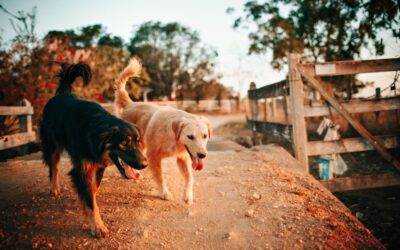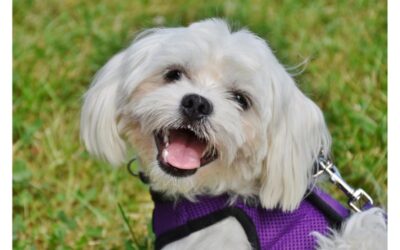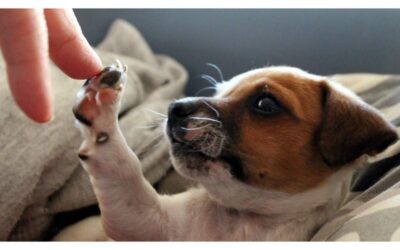Dogs “make biscuits” or knead due to instinctive behaviors and comfort-seeking actions. It’s a sign they’re content and feeling safe.
Kneading, often dubbed as “making biscuits,” is a common canine habit that can mystify pet owners. This action, where a dog presses down alternately with its front paws, traces back to ancestral behavior and the nesting instincts of wild canines.
It’s comparable to a cat’s kneading, signifying pleasure, relaxation or the preparation of a cozy spot for resting. Dogs showcase this behavior when they’re particularly relaxed or when they’re settling down in their bed or on a soft surface. Understanding this deep-rooted instinct helps pet owners appreciate the subtle ways their furry companions communicate comfort and contentment. This quirky trait emphasizes the intrinsic habits that continue to shape our dogs’ behaviors, despite their domestication.
Kneading: A Feline Habit In Canines?
The term “making biscuits” or kneading is often linked with cats. Dogs showing similar behaviors might surprise their owners.
Understanding this dog’s unusual activity is important. Many believe it’s a sign of comfort and contentment. This dog’s action mimics what puppies do to stimulate milk flow.
Kneading in dogs can also point to cat-like behaviors. They do this on soft surfaces like blankets or their owner’s lap.
These actions display deep trust and relaxation in their environment. By kneading, they are also marking their territory with scent glands in their paws.
Possible Reasons Behind Your Dog’s Kneading
Dogs often knead, a behavior known as ‘making biscuits’, for various reasons. One theory suggests kneading is a way for dogs to mark their territory. Beneath their paws, dogs have scent glands that release a distinctive odor. This scent marks the area as theirs.
This behavior can be traced back to when they were puppies. Young pups knead their mother’s belly to stimulate milk flow. This instinctive action can carry into adulthood as a comforting habit. It often means your pet feels at home and is simply practicing an old reflex.
Kneading might also signal your dog is seeking comfort or security. This is similar to how humans might cuddle a pillow. When stressed or anxious, your dog may knead their bedding or your lap to create a soothing environment.
Kneading Vs. Other Compulsive Behaviors
Dogs often show repetitive behaviors, which may seem cute at first. Kneading is a common action that involves pawing at soft surfaces, resembling the process of making biscuits. Be on the lookout for excessive forms of this behavior, as they can indicate stress or anxiety. It’s important to note the context and frequency.
Observe if kneading is interrupting normal activities, like eating or resting. If these behaviors occur alongside changes in appetite or mood, it’s time to contact a vet. Persistent obsessive actions could be a sign of a larger issue. Early detection and intervention are crucial in addressing any potential problems. Ensure your furry friend’s mental and physical health remains a top priority.
Encouraging Or Discouraging The Behavior
Understanding your dog’s behavior is vital. Encouraging kneading or ‘making biscuits’ may seem cute, but it’s important to know when to encourage it and when to offer alternatives. Dogs often knead to show affection or comfort. If you wish to encourage this, use positive reinforcement techniques. This means giving them a treat or verbal praise when they knead at the right time and place.
On the other hand, training alternatives to kneading are necessary if the behavior becomes obsessive or damaging. Teach your dog other ways to seek comfort or affection. Simple commands like ‘sit’ or ‘stay’ can redirect their urge to knead. Always reward them for following these commands. You can use toys or play as another way to focus their energy and reduce unwanted kneading.
When To Consult A Vet
Observe your dog’s behavior for signs of change. Excessive ‘making biscuits’, or kneading, may be a quirky habit. Yet, it can also signal stress or discomfort. Is your furry friend doing this more often? Or with more intensity? Regular vet visits ensure your pet’s well-being.
Professional advice plays a crucial role in understanding your dog’s actions. Your vet can identify if kneading is a playful trait or a health concern. Don’t wait for obvious symptoms. Early detection through a veterinary assessment is key to managing health issues.
Understanding Your Dog’s Body Language
Dogs express themselves in many ways. One odd behavior is kneading or ‘making biscuits’. Kneading is when a dog pushes their paws in and out. This action is a deep-rooted instinct.
Your furry friend might ‘make biscuits’ to show comfort or contentment. They may do this on soft surfaces like pillows or your lap. It can trace back to their puppy days when they knead their mother for milk.
Remember, your pooch communicates through action. Observing your dog’s body language reveals their emotions and needs. Is your dog relaxed with a soft gaze and wagging tail? They’re likely feeling happy and safe. Kneading paired with relaxed ears and soft eyes means they’re in a good mood.
Frequently Asked Questions For Why Does My Dog Make Biscuits
Why Do Dogs Knead Or “make Biscuits”?
Dogs knead or “make biscuits” as a comforting behavior. It’s a sign of contentment and comfort, stemming from their kittenhood experiences of kneading their mother for milk.
Is Kneading A Sign Of A Happy Dog?
Yes, when dogs knead or “make biscuits,” it’s typically a sign of happiness. It’s a behavior they associate with the soothing comfort they felt as puppies.
Can Kneading Be A Sign Of My Dog’s Anxiety?
Kneading can occasionally be an anxiety-related behavior in dogs. If accompanied by other signs of stress, it could indicate your dog is seeking comfort.
What Should I Do If My Dog Kneads Excessively?
If your dog kneads excessively, consider providing more comfort, like a soft blanket. If it seems compulsive, consult a vet for potential anxiety issues.
Conclusion
Understanding your dog’s behavior can be quite fascinating. Kneading, or ‘making biscuits,’ is a sign of comfort and affection. This common activity reflects their contentment and trust in you. Keep observing and nurturing your bond with your furry friend. Cherish these moments as part of the unique journey of pet ownership.



